This post may contain affiliate links, which means I’ll receive a commission if you purchase through my link, at no extra cost to you.
Innsbruck is a historic, picturesque city with a mountainous backdrop. Settlers date back to the early Stone Age and what is now known as Innsbruck today was an important base for the Romans after building the Brenner Pass in the 15th century. The name, Innsbruck, came about in 1187 when the Inn Bridge was constructed, the first bridge to cross the River Inn. Innsbruck became the capital of the state Tirol in 1429, under Maximilian I. Today, Innsbruck is a popular sporting destination because of the 1964 and 1976 Winter Olympics the city hosted.
A visit to Innsbruck will not be complete without the Innsbruck Card which gives access to 22 attractions, lifts, and public transportation, including the hop-on-hop-off bus. Cards are available for 24, 48, or 72 hours, with prices ranging from € 53 to € 73 per adult. With the Nordkette Cable Car costing € 44 alone, it is a no-brainer to purchase the Innsbruck City Card which includes the cable car.
1. Bergiselschanze (Bergisel Ski Jump)
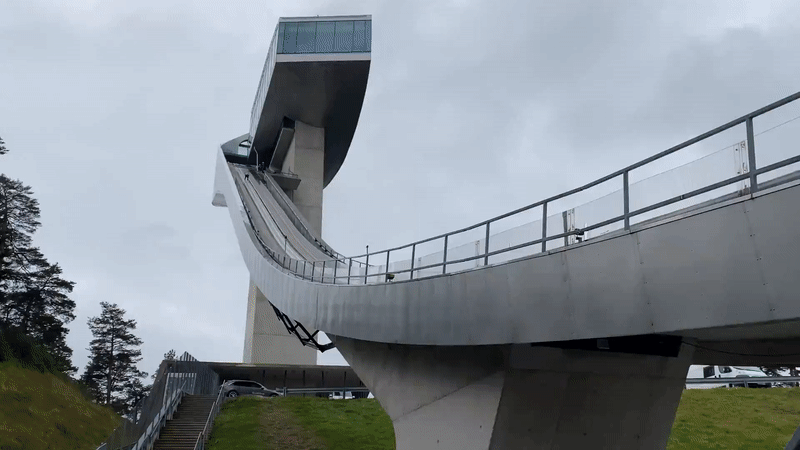 Bergiselschanze (Bergisel Ski Jump)
Bergiselschanze (Bergisel Ski Jump)
The Bergiselschanze (Bergisel Ski Jump) overlooks the Olympic city of Innsbruck, on the historic Bergisel hill. About 200 years ago, Tyroleans, led by Andreas Hofer, fought against the Bavarians on Bergisel hill for Austria. The first ski jump was built in 1925, and the sports facility has been honored with hosting Olympic events twice – in 1964 and 1976. Along with being an Olympic venue, Mass was celebrated by Pope John Paul II in 1988 for 60,000 people.
Shortly after I arrived, the professional ski jumpers started practicing. I excitedly waited for them to start. Every time they shot off the ramp and into the air, my mouth dropped. I wasn’t sure if this was my Florida reaction with never seeing anything like this before but I was surrounded by German-speaking onlookers who were just as amazed.
Cost: Free with City Card
2. Schloss Ambras (Ambras Castle)
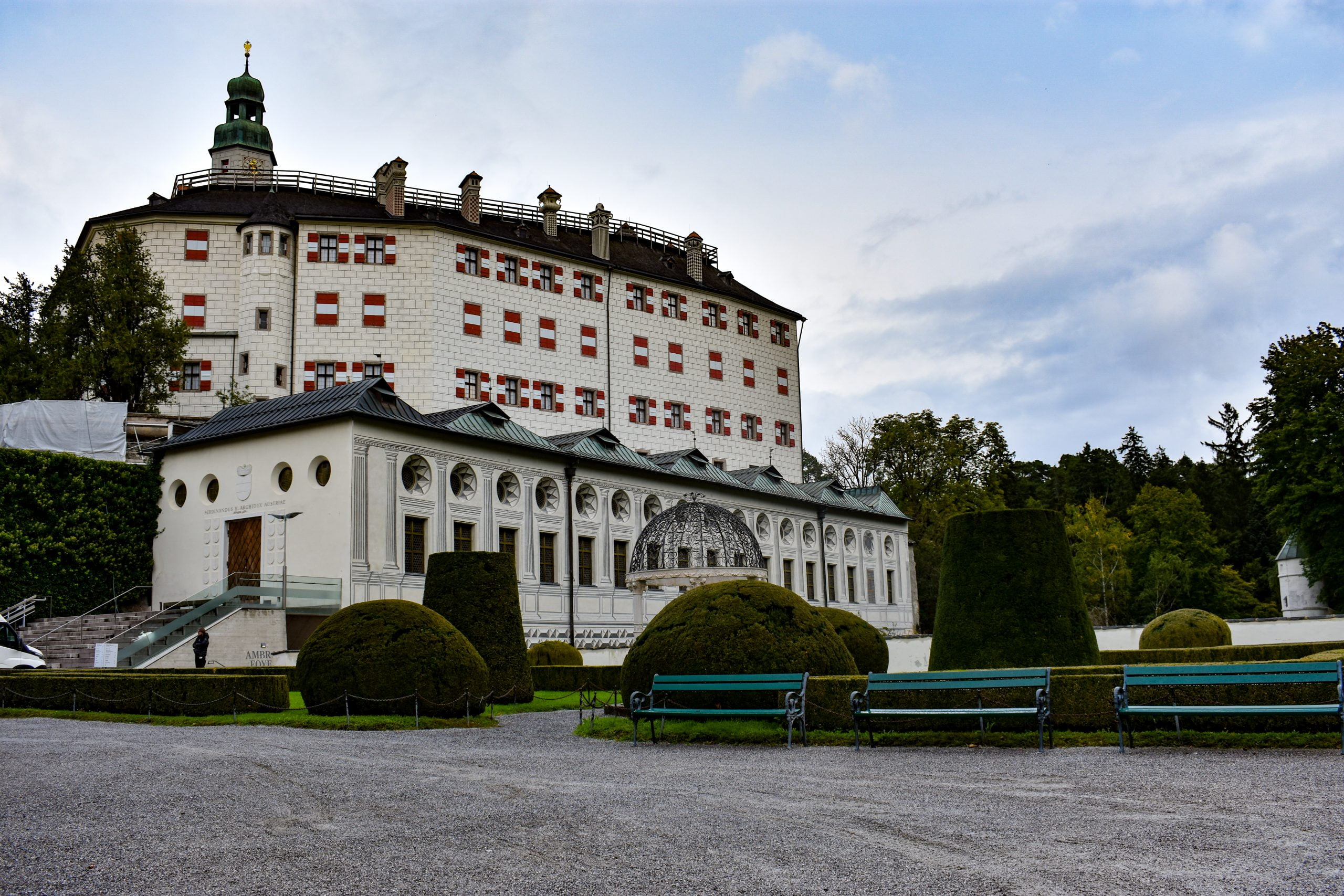 Schloss Ambras (Ambras Castle)
Schloss Ambras (Ambras Castle)
Perched above Innsbruck is Schloss Ambras (Ambras Castle). The castle was first mentioned in an 11th-century document and was eventually passed into the hands of the Habsburg Dynasty in 1363. Archduke Ferdinand II had the medieval Ambras castle converted into the present Renaissance castle to display his collections of worldwide fame. The castle is complemented by an English landscape garden.
The Habsburg Dynasty is also known as the House of Austria and is considered one of the most important in European history. Their European rule lasted for nearly 800 years and several impressions from the Imperial family are left on Innsbruck today, including Ambras Castle, the Court Church, Imperial Palace, and the Golden Roof.
Ambras Castle is a well-preserved romantic Renaissance-style castle and includes Europe’s oldest collection of arts, armories, and books. The armory includes a collection of more than 120 original suits of armor – the largest collection in Austria. The famous Portrait Gallery features over 200 paintings, reflecting the reign of the Habsburg Dynasty. It was in one of these paintings that I learned about the Gonzalez family, who had a disorder of being completely covered in hair and were often regarded as the “werewolf of the Canaries.”
Cost: Free with City Card
3. Hofkirche (Court Church)
 Hofkirche (Court Church)
Hofkirche (Court Church)
Hofkirche (Court Church) is a Gothic church located in the Old Town (Altstadt) of Innsbruck. The church was built in 1553 by Emperor Ferdinand I as a memorial to his grandfather Emperor Maximilian I. The Court Church is also known by locals as “Schwarzmander Church” or “Church of the Black Men” thanks to the 28 life-size bronze figures that stand guard, watching over the tomb of Emperor Maximilian I.
Interestingly enough, 8 of the Schwarzmanders are actually women and the Emperor’s tomb is empty. Maximilian I is actually buried in Wiener Neustadt, in a church where the walls and foundations weren’t strong enough to bear the weight of his tomb. He had planned his final resting place but it wasn’t completed until three decades after his death.
Cost: Free with City Card
4. Hofburg (Imperial Palace)

The Hofburg (Imperial Palace) is a former Habsburg palace in Innsbruck, Austria, and is considered one of the three most significant cultural buildings in the country, along with the Hofburg Palace and Schönbrunn Palace in Vienna. The palace was completed in 1500 under Emperor Maximilian I. Originally, the building showed Gothic inspiration, however, nearly 250 years later, Maria Theresa (1717-1780) made drastic changes after deeming the palace dated. The palace was then renovated to a late Baroque style.
Cost: Free with City Card
5. Nordkette Cable Car
The Nordkette is made up of three different railways, beginning at Congress Station in Old Town Innsbruck on the Hungerburgbahn. From here, Seegrubenbahn runs from Hungerburg to the Seegrube, where a third transfer from the Seegrubenbahn to the Hafelekarbahn is made. The trip takes less than 30 minutes to go from Old Town to “The Top of Innsbruck” at 7,401 ft (2,256 m).
The ride brought us to a white blanket-covered mountain. Even though there was no view down to Innsbruck this day, there was still excitement over the snow, seeing as though Floridians don’t see much of it!
Cost: Free with City Card

6. Goldenes Dachl (Golden Roof)
The Goldenes Dachl (Golden Roof) is a landmark symbol of Innsbruck, located in the Altstadt (Old Town). It is considered the city’s most famous symbol.
The roof was decorated with 2,657 fire-gilded copper tiles for Emperor Maximilian I in 1500 to mark his wedding to Bianca Maria Sforza and to squash rumors that the imperial was facing financial issues.
The building was originally constructed by archduke Friedrich IV in the early 15th century.
Cost: Free with City Card
7. Stadtturm (Town Tower)
Stadtturm (Town Tower) is a landmark watchtower built in the 1400s with an observation deck and copper-clad onion dome. Stadtturm contains a viewing platform 101 ft (31 m) above Old Town and gives 360-degree views.
When the tower was constructed, tower guards watched over Innsbruck day and night. The duties of the tower guards included calling out time and warning people of dangers, including fires. The last guard worked until 1967.
The lower part of the tower served as a city prison and the barred windows on the first two floors prove to be a reminder of this.
Cost: Free with City Card
8. Alpenzoo Innsbruck (Innsbruck Alpine Zoo)
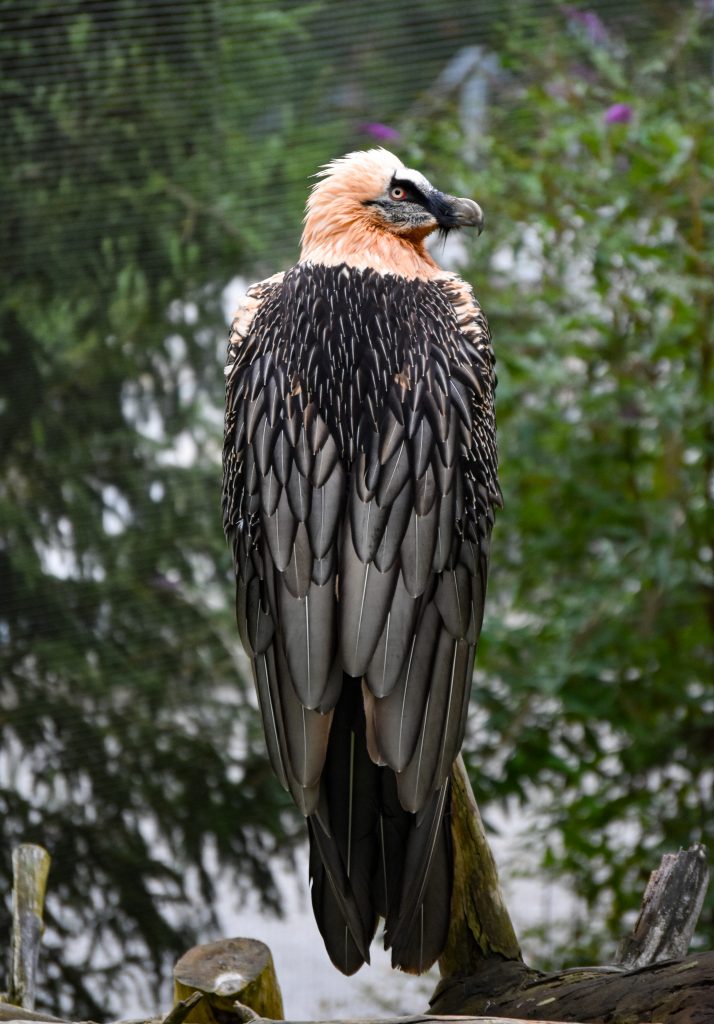
Innsbruck’s Alpine Zoo sits above Innsbruck, at 2,460 ft (750 m) above sea level.
The zoo expands over 24.7 acres (10 hectares) and contains roughly 2,000 alpine animals with 150 species, the most alpine species of any zoo.
This zoo literally brings you into enclosures, getting up close and personal with several species, including the bearded vulture which can stand over 4 ft tall with over a 9 ft wingspan.
The Innsbruck Alpine Zoo focuses on animals that inhabit the alps. The zoo sits on a distinctive mountainside and is famous for the reintroduction of endangered specials such as the bearded vulture and northern bald ibis in the wild.
Inhabitants of the zoo include bears, wolves, bison, moose, and several birds of prey. Along with this, the zoo has 17 tanks with more than 50 species of Alpine fish, making it the biggest freshwater aquarium in the world.
Cost: Free with City Card
Add some more excitement to your trip with these fantastic tours:
9. Swarovski Kristallwelten (Swarovski Crystal Worlds)
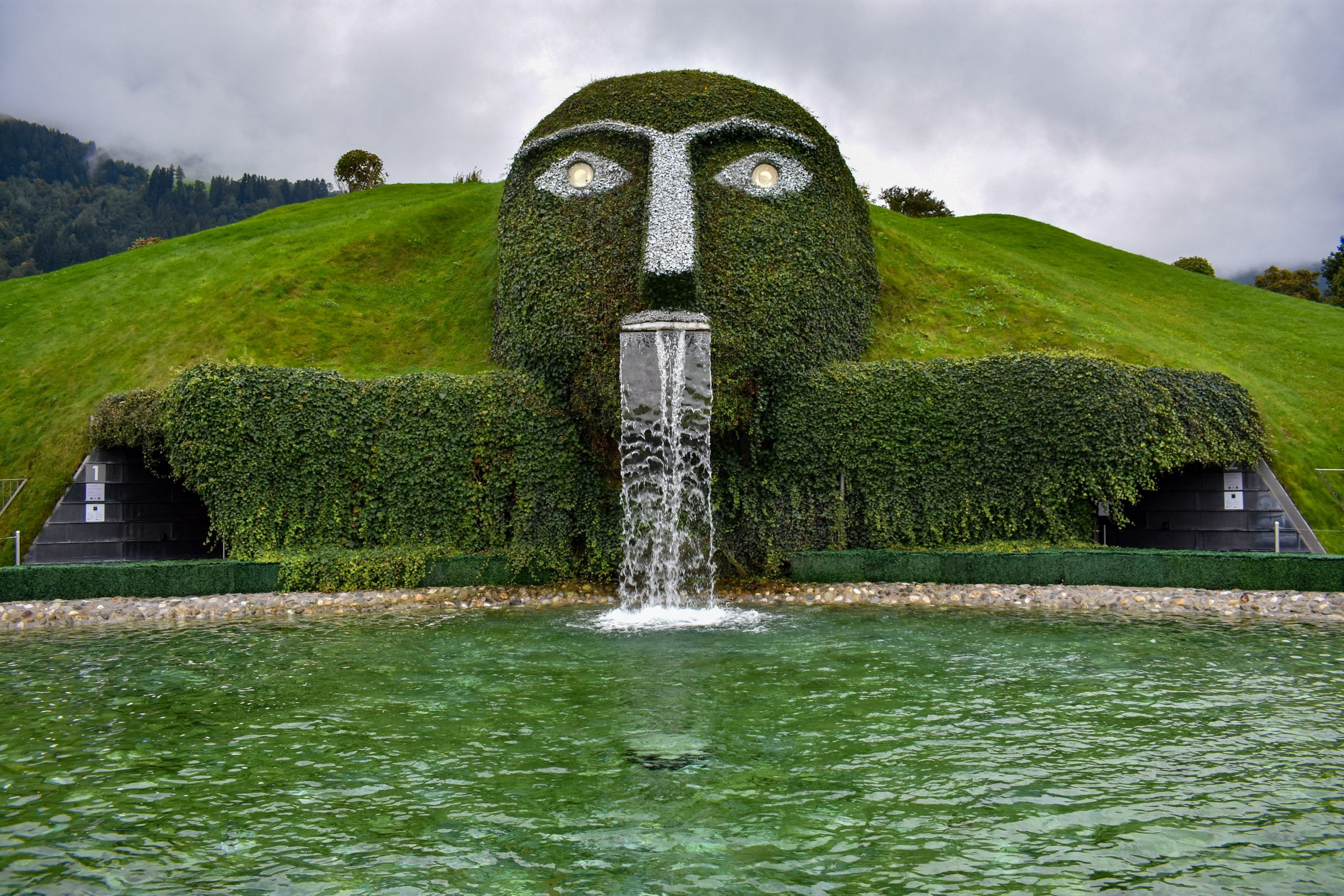
Swarovski Kristallwelton (Swarovski Crystal Worlds) gets the vote for the weirdest attraction I’ve visited. I wanted to stop here because of the very neat entrance, which is a foliage-covered giant with a waterfall spewing out of its mouth. However, once inside the attraction, I can only best describe it as trying to navigate someone’s acid trip. I suggest this stop if you’re a big fan of crystals or have the Innsbruck City Card with some extra time!
If you do not have a vehicle, the Innsbruck City Card includes a free shuttle from the city to Swarovski Kristallwelten.
Cost: Free with City Card
10. Schloss Tratzberg (Tratzberg Castle)
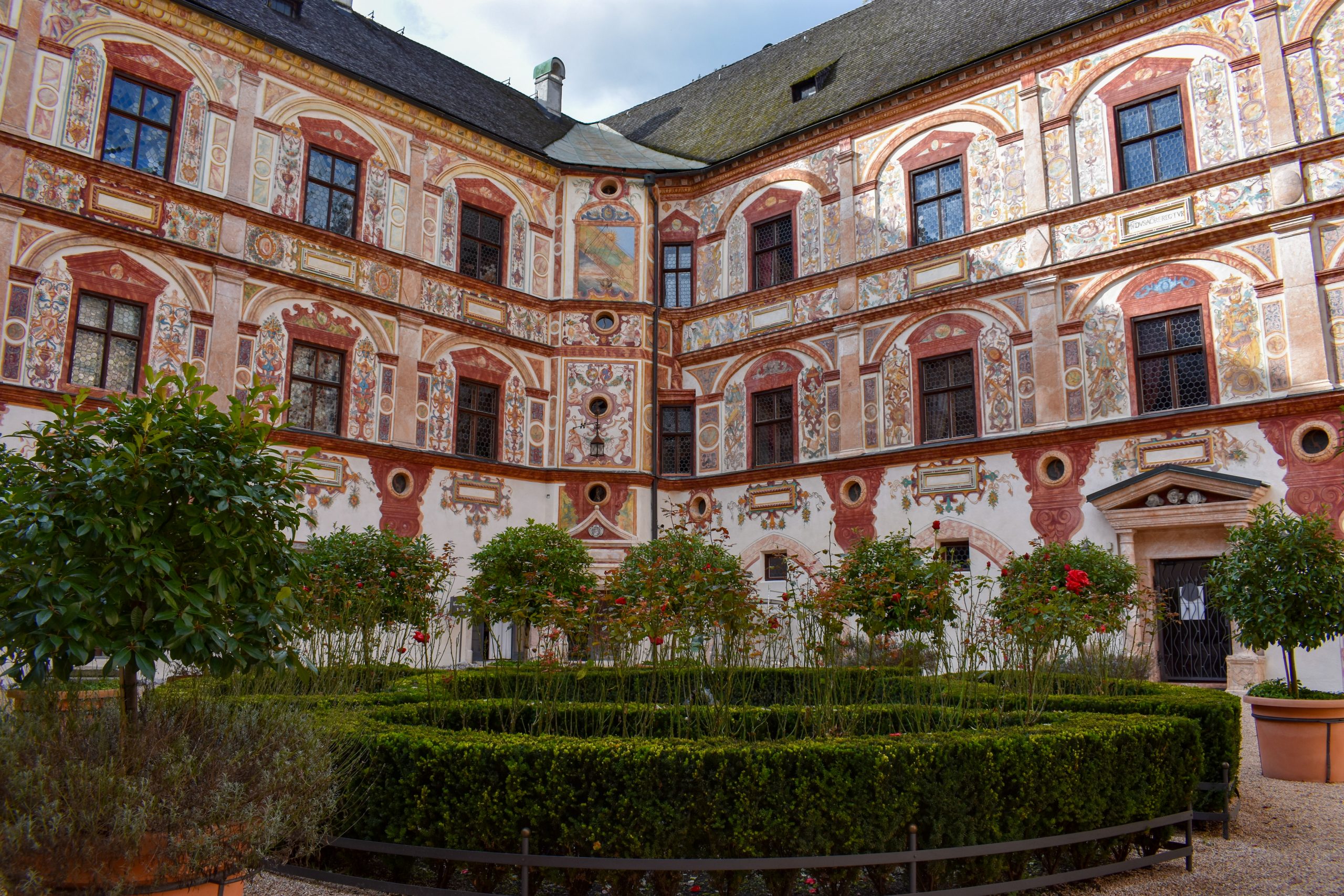
Schloss Tratzberg (Tratzberg Castle) is located 30 minutes outside of Innsbruck. It is first mentioned in documents dating from the 13th century and was originally used to secure the border with neighboring Bavaria. After falling into disrepair, it was rebuilt by the Fugger family of merchants, becoming a prime example of 16th-century Tirolean castles.
The castle changes hands often, being used as a hunting castle by the emperor Maximilian I and the Fugger family. In 1492, the castle was destroyed by a fire. Maximilian I didn’t rebuild it but exchanged it with a castle of the Tänzl brothers. In 1500, the brothers rebuilt the first cast of the castle in a late Gothic style. In the 19th century, Tratzberg Castle came into the possession of the Count of Enzenberg who still own it today.
Cost: € 14.50 per adult
Visiting Innsbruck
Where to purchase the Innsbruck City Card: Tickets are available at https://www.innsbruck.info/en/sightseeing/innsbruck-card.html. Online tickets allow you to present a mobile barcode to enter attractions. Tickets are also available at Tourist Information centers, at hotel receptions, in larger museums, and at Innsbruck Airport (Tabak Trafik).
City Card cost: Adult (16+) prices vary by length of City Card validity.
24-Hour Pass – € 53
48-Hour Pass – € 63
72-Hour Pass – € 73
Children 6+ Pricing:
24-Hour Pass – € 26.50
48-Hour Pass – € 31.50
72-Hour Pass – € 36.50
Where to stay: I stayed at an apartment in the city, Heart of INNs Bruck. The apartment had a private room and a shared bathroom, kitchen, and living space. The host, Martin, stayed in the other room in the apartment. Martin was happy to share several tips for the city and answered all of my questions. This hotel cost me USD 160 for two people for two nights.
Map of Stops
To view this map in Google Maps click here.
Access to 360+ Gardens Across North America: American Horticultural Society Membership (2025)
Discover the wonders of nature through the American Horticultural Society’s (AHS) Reciprocal Admissions Program Membership, offering exclusive access to a remarkable network of over 360 gardens across North America, including 317 paid gardens with complimentary entry.
myVEGAS Rewards Comp Calendars (2025)
Check out the 2025 myVegas Hotel Comp Calendars for Mandalay Bay, Luxor, Park MGM, MGM Grand, Excalibur, and New York New York, Bellagio, and Aria
15 Things to Do in Lake Bled for an Incredible Slovenian Adventure (2024 Guide)
Explore Lake Bled with my guide to 15 must-do activities, from hiking to Ojstrica Viewpoint to savoring Bled Cream Cake. Adventure awaits in Slovenia!
8 Comments
Submit a Comment





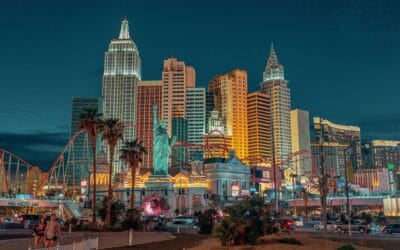

I’d love to visit!
Great post! I’ve always wanted to go to western Austria but have never heard of this area. You provided lots of great ideas for a visit. Thank you!
What a great find. Love the Swarovski Kristallwelten – we’ll be sure to add this to our Austria Water Wellness Guide – when we eventually get round to visiting! 💙
Definitely saving this one since I’m hoping I’ll be in Austria later this year!
You will love Austria! If you will be in the Salzburg region, I highly recommend a visit to Eisriesenwelt, the world’s largest ice cave! https://kalitodd.com/eisriesenwelt/
Innsbruck looks so pretty, makes me want to visit..
Love this country and so much to see. great article
We only got to spend a short amount of time in Innsbruck when we visited on a day trip. My husband and I would both love to go back.